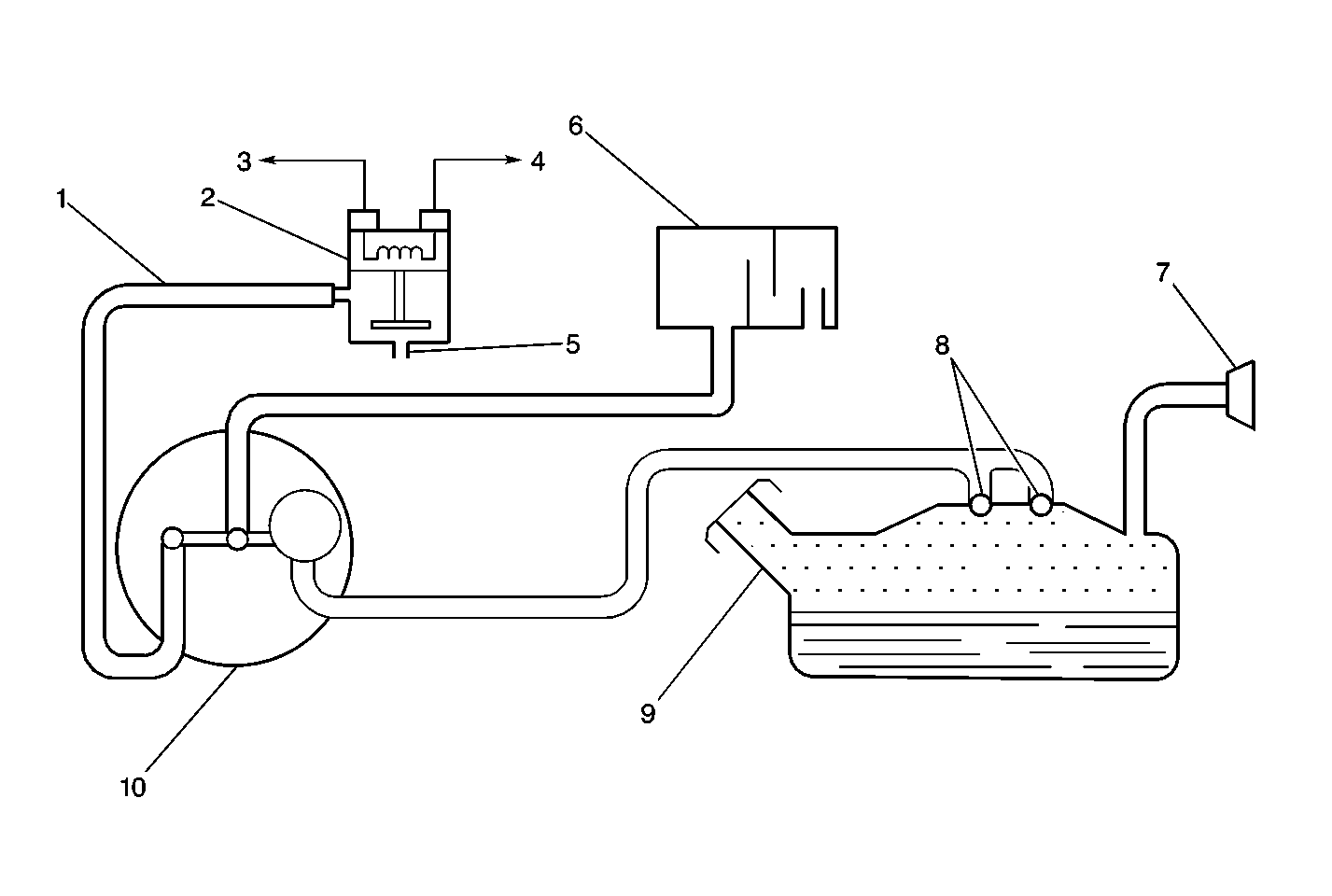The Evaporative Emission (EVAP) control system
limits the fuel vapors from escaping into the atmosphere. The EVAP system
transfers the fuel vapor from the sealed fuel tank (9) to an activated
carbon (charcoal) storage device known as the EVAP canister (10). The EVAP
canister stores the fuel vapors until the engine is able to use the extra
fuel vapor.
When the engine is able to use the extra fuel vapor, the intake air
flow (5) purges the fuel vapor from the carbon element. After the fuel vapor
has been purged from the carbon element, the normal combustion process
consumes the fuel vapors.
The fuel tank is sealed with a fuel cap that is not normally vented
to the atmosphere. The fuel tank cap has a safety valve which allows for both
pressure and vacuum relief.

